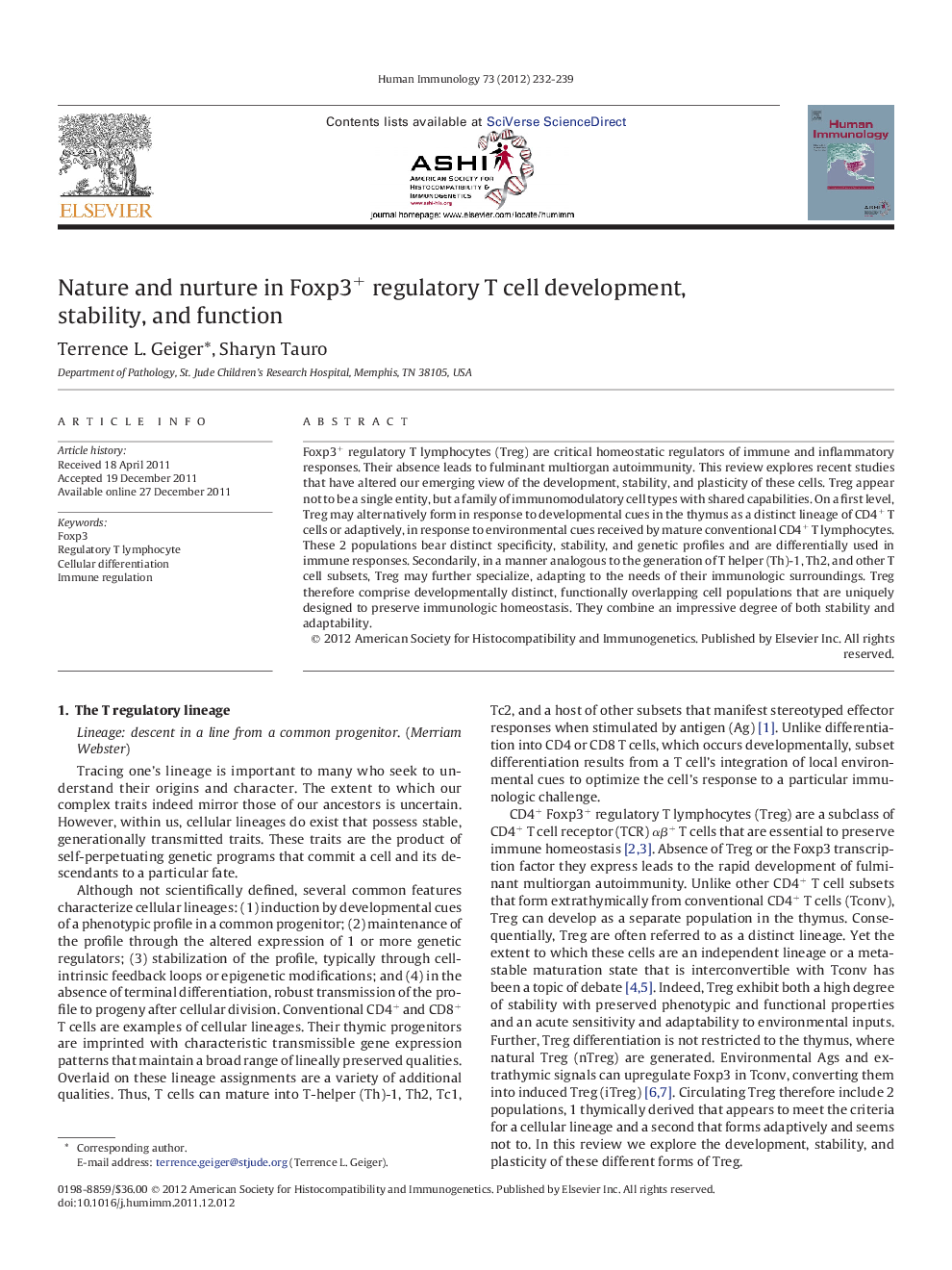| Article ID | Journal | Published Year | Pages | File Type |
|---|---|---|---|---|
| 3351721 | Human Immunology | 2012 | 8 Pages |
Foxp3+ regulatory T lymphocytes (Treg) are critical homeostatic regulators of immune and inflammatory responses. Their absence leads to fulminant multiorgan autoimmunity. This review explores recent studies that have altered our emerging view of the development, stability, and plasticity of these cells. Treg appear not to be a single entity, but a family of immunomodulatory cell types with shared capabilities. On a first level, Treg may alternatively form in response to developmental cues in the thymus as a distinct lineage of CD4+ T cells or adaptively, in response to environmental cues received by mature conventional CD4+ T lymphocytes. These 2 populations bear distinct specificity, stability, and genetic profiles and are differentially used in immune responses. Secondarily, in a manner analogous to the generation of T helper (Th)-1, Th2, and other T cell subsets, Treg may further specialize, adapting to the needs of their immunologic surroundings. Treg therefore comprise developmentally distinct, functionally overlapping cell populations that are uniquely designed to preserve immunologic homeostasis. They combine an impressive degree of both stability and adaptability.
